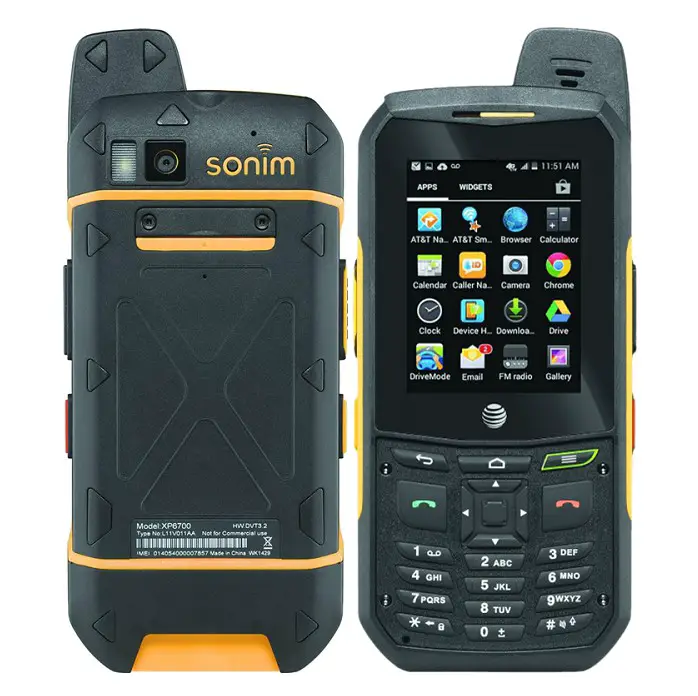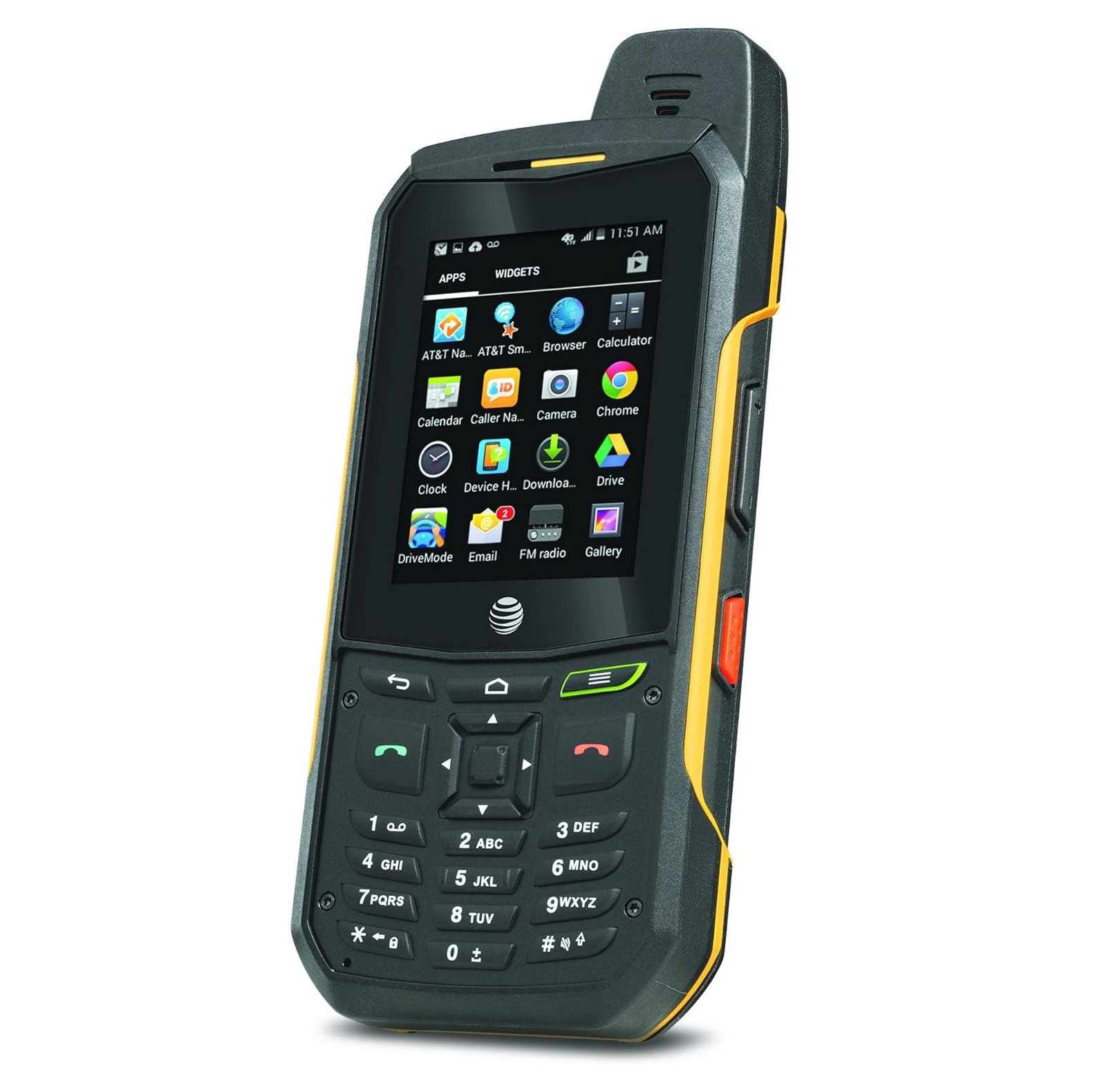Our Rating
The rating below is a collection of user reviews and expert opinions from our in-house writers and other reviewers across the web.
-
Display & Built
7 / 10
-
Audio Output
7 / 10
-
Battery
7 / 10
-
Camera Quality
7 / 10
-
OS Usability
7 / 10
-
Performance
7 / 10
This is Sonim XP6. This rugged-button Android phone was announced back in 2014. It came with a 2.63-inch display, powered by Qualcomm's Snapdragon 400, and runs Google Android 4.4.2 Kitkat out of the box.
The phone was designed for extreme outdoor workers, or engineers who work in harsh environments. For this purpose, the XP6 is water, dust, drop, and weather resistant with IP68, IP69, and MIL-STD-810G certification. It can be used in work environments with temperatures ranging between -20°C to +55°C.
In addition to the CPU, the Sonim XP6 is backed by 1GB RAM and 8GB non-expandable internal storage. It has a single 5-megapixel main camera on the rear, and it is powered by a large 4800mAh battery that can last above 100 hours on a single charge. The table below contains the detailed specifications of the Sonim XP6 rugged button smartphone.
Full Specifications
Details
|
Launch
This refers to the date when this device was officially introduced into the market.
|
Announced 2014, November / Released 2014, December
|
|
Brand / Model
These are key identifiers that indicate the manufacturer or company that produces this smartphone, and the specific model of the phone.
|
Sonim XP6
|
Network Technology
|
2G Bands
2G refers to the second generation of cellular technology and includes various frequency bands for basic voice and text communication.
|
2(1900 ), 3(1800), 8(900)
|
|
3G Bands
3G refers to the third generation of cellular technology, encompassing different frequency ranges for faster data speeds, mobile internet, and multimedia capabilities.
|
850 / 900 / 1900 / 2100
|
|
4G Bands
4G refers to the fourth generation of cellular technology, operating in specific frequency bands to provide significantly faster data speeds, supporting high-definition video streaming and advanced applications.
|
1, 2, 4, 5, 7, 8, 12, 17
|
Body
|
Ruggedity
This indicates the device's durability and ability to withstand harsh conditions or impacts. It is a very popular term used with tough or rugged phones.
IP68/IP69K are international ratings that measure a smartphone's resistance to dust and water.
MIL-STD-810H is a military standard that sets criteria for the environmental and durability testing of electronic devices. It means this device has undergone various tests to demonstrate its resilience in challenging conditions, such as extreme temperatures, humidity, vibration, and shock.
|
IP68 and MIL-STD-810G
- Water/dust/weather proofed / Drop-to-concrete Resistance from 2m
|
|
Dimensions / Weight:
This refers to the physical size and weight of the device, measured in millimeter (mm) and grams (g) respectively.
|
137 x 64.5 x 20.5 mm / 270 grams
|
|
SIM
SIM stands for "Subscriber Identity Module." It is a small card, typically inserted into a slot in a mobile phone, that contains important information for connecting the device to a mobile network.
SIM cards can come in various sizes, including standard SIM, micro SIM, nano SIM, or even electronic (eSIM), depending on the phone's design.
|
Single Micro SIM
|
Display
|
Screen
Display refers to the screen or visual interface of the device. It includes details such as screen size, resolution, and technology (e.g., LCD, OLED, AMOLED).
|
2.63-inches / IPS LCD touch screen
|
|
Resolution
Screen Resolution refers to the number of pixels that make up the display screen and is typically expressed as a combination of horizontal and vertical pixel counts (e.g., 1920 x 1080, 2560 x 1440, or 3840 x 2160). The screen resolution determines the level of detail and sharpness of the visual content displayed on the smartphone's screen. Higher resolutions generally result in crisper and more detailed images and text
|
320 x 432 pixels / 4:3 ratio / 204 PPI
|
|
Features
Camera features encompass various functionalities and capabilities that enhance the device's photography and videography experience. These features can include Optical Image Stabilization (OIS) Panorama, HDR, Ai Mode, Night Mode, Portrait Mode, etc.
|
Display shatter protected
|
Platform
|
OS
This is the Operating System. It refers to the software platform that runs on the smartphone and manages the device's hardware and software resources. Common smartphone operating systems include Android (developed by Google), iOS (developed by Apple).
|
Google Android 4.4.2 (KitKat)
|
|
Chipset
This refers to the integrated circuit that serves as the device's central processing unit (CPU). It plays a pivotal role in the smartphone's performance, speed, and energy efficiency.
|
Qualcomm MSM8926 Snapdragon 400 (28 nm)
- Quad-core 1.2 GHz Cortex-A7
- Adreno 305 GPU
|
|
Memory
This encompasses two components: storage capacity and RAM (Random Access Memory). Storage capacity, typically measured in gigabytes (GB) or terabytes (TB), dictates how much internal space is available for apps, files, and media storage. RAM, measured in gigabytes (GB), is temporary memory crucial for multitasking and app performance, with more RAM generally leading to smoother operation and faster task-switching capabilities.
|
1GB RAM + 8GB ROM / No SD-card support
|
Camera
|
Main
The main camera, also known as the rear camera, is the primary camera on the back of the smartphone. It is typically used for capturing photos and videos in various scenarios and is often the more powerful and versatile camera on the device
|
5MP single rear camera
|
|
Features
Camera features encompass various functionalities and capabilities that enhance the device's photography and videography experience. These features can include Optical Image Stabilization (OIS) Panorama, HDR, Ai Mode, Night Mode, Portrait Mode, etc.
|
720p@30fps video recording / LED Flash
|
Communications
|
Connectivity
This encompasses the device's ability to connect and communicate with other devices and networks. It includes features such as cellular connectivity, Wi-Fi, Bluetooth, NFC (Near Field Communication), and USB connectivity options.
|
Bluetooth 4.0 A2DP / WiFi 2.4G / FM Radio / Micro USB v2.0
|
|
Navigation
Navigation refers to the device's ability to determine and display location information and provide directions to users. This functionality is usually powered by Global Positioning System (GPS) technology.
|
GPS, GLONASS
|
|
Sensors
This refers to the various built-in sensors that enable the device to gather information from its environment and interactions. Common sensors found in rugged smartphones may include fingerprint sensor, light sensor, barometer sensor among others.
|
Accelerometer, proximity
|
Battery and Others
|
Battery
This section refers to the device's power source and its related specifications. This typically includes details such as the battery capacity, measured in milliampere-hours (mAh) or watt-hours (Wh), and it charging details.
|
Li-Ion 4800mAh, non-removable
|
|
Others
This is a catch-all category that includes various additional features, specifications, or capabilities that don't fall under the major categories like display, camera, memory, or connectivity.
|
Black with touch of Orange color
|
Disclaimer Note:
These specifications were entered manually, hence we CANNOT guarantee 100% accuracy. Also, that your device is listed on this website DOES NOT call for reckless usage! It is crucial to exercise due diligence, as we cannot be held responsible for any damage to your device due to overconfidence in it built quality.





Leave a Reply